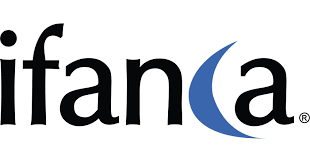
Latest regional initiatives in halal standards and accreditation: a step towards harmonization?
Official halal standards are no longer the domain of Southeast Asian countries such as Malaysia, Indonesia and Singapore. Recent initiatives in the GCC region, as well as international efforts under the umbrella of the Organisation of Islamic Cooperation (OIC) are driving the next phase in the regulation of the halal food industry.
These new, updated standards will apply directly to halal certification bodies (HCBs) and accreditation agencies, taking the much-needed convergence process a major step forward.
What impact will this have on food manufacturers? Which regions will be most affected? How will this change the dynamics of the global halal food market?
| YOUR PAIN POINTS ADDRESSED | ASK YOURSELF | |
|
Scenario: As a senior executive in a food manufacturing company exporting halal products to the Muslim world, you need to understand and respond to any new regulations. |
What effect will the new accreditation standards have on halal food manufacturers? |
What are these new accreditation initiatives and who is developing them? |
| What will the regional impact be of these changes? | ||
| How will these changes affect the global sector dynamics for halal food? | ||
OVERVIEW OF NEW STANDARDS BY REGION
New standards that specifically address compliance requirements for HCBs are being developed on three levels: national, regional and international.
All are likely to have a significant impact on food manufacturers that export to Muslim-majority markets of the MENA region and more specifically to the GCC markets.
National: The UAE’s Emirates Standardization and Metrology Authority (ESMA) has developed an accreditation standard that will require all HCBs’ certifying products being imported into the UAE to be accredited by ESMA.
Regional: The GCC Accreditation Centre (GAC) has developed similar standards for the accreditation of HCBs for products being imported into the GCC region.
International: The Standards and Metrology Institute for Islamic Countries (SMIIC) has a mandate from the OIC to develop and implement halal standards for use by the 57-member states of the OIC. Turkey is taking the lead in this initiative.
On closer inspection, all these schemes are very similar and only differ in terms of which markets they are applied to.
All call for HCBs, in effect, to become ISO-compliant, which would be a significant step up for almost all HCBs, whether they are independent private sector companies, Islamic charities, or government bodies.
REGIONAL IMPACT
While these schemes are not yet fully operational, when applied, their impact will be felt by all international HCBs and therefore by all manufacturers or producers that export to Muslim-majority countries, particularly affecting the MENA-GCC region.
Global interconnectedness: The overall food and beverage (f&b) consumption in the MENA region was valued at $392 billion in 2014.
$91 billion of this total is spent in the GCC alone, according to the State of the Global Islamic Economy 2015-2016 report from Thomson Reuters.
A substantial proportion of f&b is imported, mostly from non-Muslim countries with independent HCBs, all of which will need to be accredited in the near future.
The thrust of these new schemes is coming from the GCC region and ESMA and GAC are more likely to have their procedures in place before SMIIC as the consultation process will be simpler.
Arab collaboration with SMIIC for the OIC standards also gives more weight to the MENA and GCC markets, as both HCBs and exporters will want to maintain their share of this market.
Consequently, all these schemes seem likely to swing the leadership of the halal f&b market away from the traditional leaders in Southeast Asia and usher in a new hierarchy for standards development and overall compliance.
|
MENA F&B CONSUMPTION (2014, USD billions) |
 |
|
Source: State of the Global Islamic Economy Report 2015-16, Thomson Reuters in collaboration with DinarStandard |
GLOBAL MARKET IMPACT
The choice of which HCB to use will become increasingly important and there is likely to be some disruption among HCBs as they attempt to make the required changes to be compliant with the new standards.
While accreditation will have a long-term positive impact on the halal f&b sector in general, there may be near-term confusion about which accreditation scheme is best to use.
Currently, on paper, there is a high degree of overlap between the schemes, and the extent to which they provide access to market may be a key differentiating criterion for scheme adoption.
The SMIIC accreditation scheme, if it receives sufficient support from the OIC member countries, will clearly have the widest market reach and would greatly simplify the halal conformity process for exporters.
However, many OIC members have their own national schemes either in use or being developed and it still remains to be seen which schemes will become the most relevant.
LACK OF LEADERSHIP
Lack of clear leadership remains a significant stumbling block to harmonizing the accreditation process and it may well hinder the further development of the halal sectors if unresolved.
Furthermore, the danger remains that over-zealous attempts to apply stringent standards for HCBs could also have a negative effect on growth in the short term.
The consulting firm Oxford Analytica recently stated in a report on the role of standards within the Islamic Economy that, “The overall sentiment is that greater standardization in both Islamic finance and the halal industry would produce dividends that would benefit the Islamic economy as a whole.”
But the report also warns that “excessive standardisation could stifle innovation”, particularly in the Islamic finance and halal food sectors.
These schemes are a step in the right direction towards harmonization, led by a critical region in the Muslim world, but much more will need to be done to create a truly global and common set of standards.
|
RECOMMENDED ROADMAP FOR EXPORTERS Monitor the progress of these initiatives closely. |
| Discuss with your HCB regarding their stance on accreditation and assess how your revenues and market share might be affected by the changes. |
| Evaluate alternatives to your existing HCB, determine whether you're getting the right access to market. |
| Wherever possible, participate in the standard-setting process at relevant conferences and meetings. |
© Copyright SalaamGateway.com 2015

Abdalhamid Evans, DinarStandard Associate Partner